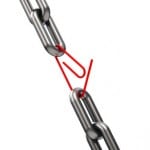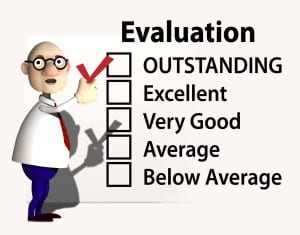 This is going to be an uncomfortable conversation as we talk about assessing your team to identify your weak links – the members who are not adequately trained, prepared or fit to perform the duties of a firefighter. During my SA programs, we talk about the need to complete a situational awareness “size-up” of the crew.
This is going to be an uncomfortable conversation as we talk about assessing your team to identify your weak links – the members who are not adequately trained, prepared or fit to perform the duties of a firefighter. During my SA programs, we talk about the need to complete a situational awareness “size-up” of the crew.
If we’re being honest with ourselves, we know that not all crew members are created equal. It is a situational awareness best practice to know the strengths (and weaknesses) of your crew before engaging in a high consequence activity.
Team Size-up
Arguably, it is easier to size-up your crew when you are a full-time department with pre-established, on-duty staffing. Under this model, the size-up can, quite literally, happen at the start of the shift. And it should. Not only should you size-up the abilities and inabilities of crew members, but you should also size-up whether they are on their “A” game that day.
 Realistically, coworkers are going to, on occasion, bring personal problems to work. As much as we would wish for that not to happen, it is unrealistic. The brain simply cannot “turn off” personal issues when at work. There will be occasions when someone is operating less than 100%. Be that a home issue or, perhaps, an illness or injury. Whatever the cause, it’s important to know when a team member is less than 100%.
Realistically, coworkers are going to, on occasion, bring personal problems to work. As much as we would wish for that not to happen, it is unrealistic. The brain simply cannot “turn off” personal issues when at work. There will be occasions when someone is operating less than 100%. Be that a home issue or, perhaps, an illness or injury. Whatever the cause, it’s important to know when a team member is less than 100%.
Some team members are never 100%. These members are your known B, C or D level players. You know you have them. Living in denial won’t make their deficiencies go away. Maybe they’re inexperienced. Maybe they’re undertrained. Perhaps they are not physically fit or their attitude/mindset is not in the right place for peak performance. Whatever the reason, they are an underperformer. Knowing this could help ensure you don’t depend on them to perform A-level work and… it could save your life.
Testing Your Weak Link
Weak links fail. We know that. It’s predictable. To somehow believe that in the moment of stress a weak link is going to step up and achieve superstar performance is delusional. If it does happen, it will only be by luck. You know that. When you are dealt bad cards, don’t go all in. The stakes are too high.
 Regardless of your commitment and dedication, a weak link will drag you down and adversely impact the performance of the crew. The work you do is fraught with risk and consequence. Add a weak link and the likelihood of a bad outcome will increase.
Regardless of your commitment and dedication, a weak link will drag you down and adversely impact the performance of the crew. The work you do is fraught with risk and consequence. Add a weak link and the likelihood of a bad outcome will increase.
Training is a good place to test the strength of team members. Better to identify opportunities for improvement under controlled conditions rather than unpredictable, rapidly changing fireground conditions. Ironically, as many of us have observed, weak links find a way to skirt training requirements or to perform minimally during drills because they know their deficiencies will be obvious.
Watch out for the member who stands in the back during practice so as not to be picked to perform a skill. That is an indicator of the weak link. Watch out for the person who misses practice sessions where skill performance will be tested. That is also an indicator of a weak link.
But What About the Customer?

I can hear it now. The customer deserves our best in their greatest moment of need. I agree, they do. But our “best” can be hindered by the weak link. If you have to drag a ball and chain along with you while attempting a rescue, the potential for a successful rescue will be adversely impacted. Your safety can also be adversely impacted if something goes wrong while operating in a high consequence environment. I am not trying to be mean-spirited. Rather, I am trying to help us all acknowledge the reality of the team environment.
Dr. Gasaway’s Advice
 Test the abilities of teams during practice sessions. If they are weak, work with them to strengthen their deficiencies. Yes, this will take time and effort. Chances are, your weak links have been ignored and allowed to skate by without accountability for a very long time.
Test the abilities of teams during practice sessions. If they are weak, work with them to strengthen their deficiencies. Yes, this will take time and effort. Chances are, your weak links have been ignored and allowed to skate by without accountability for a very long time.
If your weak link lacks physical stamina, it can present additional challenges for you depending on the physical fitness standards of your department. Chances are if they are not fit, there is no standard or the standard has been poorly enforced. Lacking a standard, there may be little you can do to bring accountability to this concern. Engaging department leadership in a discussion about the need for physical standards would be a good place to start.
Baseline physical exams and on-going physical exams ensure a firefighter has the physical abilities to perform the job duties. Department standards for fitness and annual evaluations to ensure core competencies can provide assurance that, at a minimum, the firefighter is capable of performing basic skills within established parameters.
Consider having a discussion among the supervisors and command-level officers that (informally) ranks the line personnel on an A-D scale. This is not done for the purpose of formal performance evaluations. Rather, it is done to identify where opportunities lie to develop member abilities. This is especially true for members who are ranked as D-level players by the majority of the supervisors engaged in the discussion.
Avoid telling a member they have been identified as a D-level member. There is nothing to be gained by this. Rather, focus on developing the skills of all the members of the team, while ensuring the D-level member gets an opportunity to develop alongside his or her peers.
Think baby steps. Don’t try to get a D-level member to A-level performance in 30 days. That’s unrealistic. Rather, try to get the D-level member to a C-level performance over a period of time (e.g., 6 months). This is more achievable and will likely be less frustrating for the supervisors.
If your weak link has significant personal issues that are impacting job performance, this will likely require the assistance of a professional such as an employee assistance program or a counselor. Do not attempt to counsel weak links with personal issues unless you are a trained counselor. Offer to assist the weak link in locating the help they need.
Remember, the goal is to use situational awareness to perform crew assessments prior to engagement in high-risk activities. Identify your weak links and develop a plan for remediation.
Before closing, I want to acknowledge the weak link can be at the supervisor or command level as well. For the sake of keeping this article to a manageable length, I’ll have to address that component in another article.
Action Items
 1. Share an example of a time when a weak link put the safety of your team at risk. (As tempting as it may be, during this discussion, avoid identifying the weak-links by name.)
1. Share an example of a time when a weak link put the safety of your team at risk. (As tempting as it may be, during this discussion, avoid identifying the weak-links by name.)
2. Conduct a situational awareness assessment of the members under your command to determine if you have weak links. Informally rank members on an A-D scale.
3. Create a plan to help strengthen the performance of weak links… and all members of your team, for that matter.
_____________________________________________________

If you are interested in taking your understanding of situational awareness and high-risk decision making to a higher level, check out the Situational Awareness Matters Online Academy.
CLICK HERE for details, enrollment options and pricing.
__________________________________
Share your comments on this article in the “Leave a Reply” box below. If you want to send me incident pictures, videos or have an idea you’d like me to research and write about, contact me. I really enjoy getting feedback and supportive messages from fellow first responders. It gives me the energy to work harder for you.
Thanks,

Email: Support@RichGasaway.com
Phone: 612-548-4424
SAMatters Online Academy
Facebook Fan Page: www.facebook.com/SAMatters
Twitter: @SAMatters
LinkedIn: Rich Gasaway
Instagram: sa_matters
YouTube: SAMattersTV
iTunes: SAMatters Radio
iHeart Radio: SAMatters Radio
